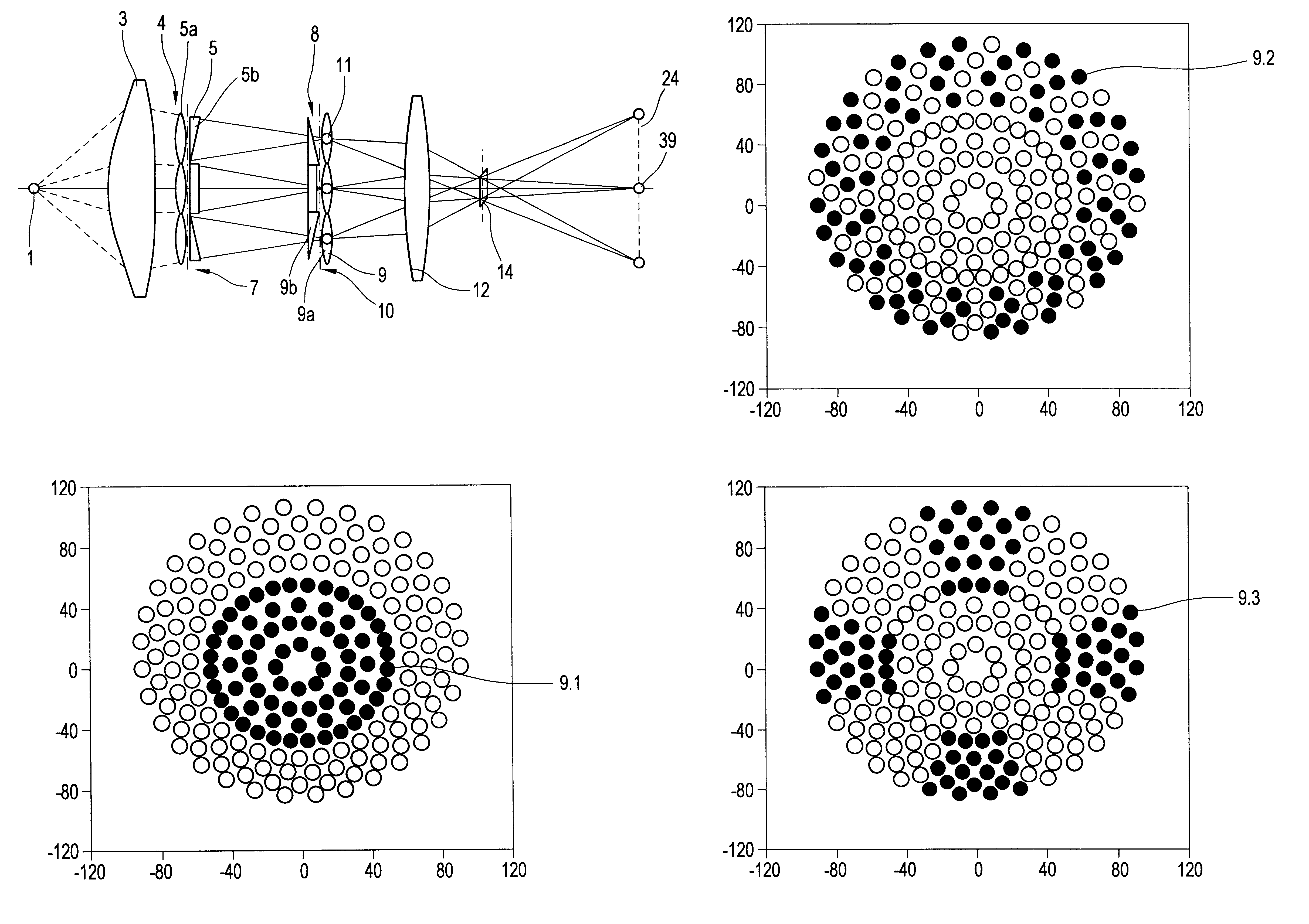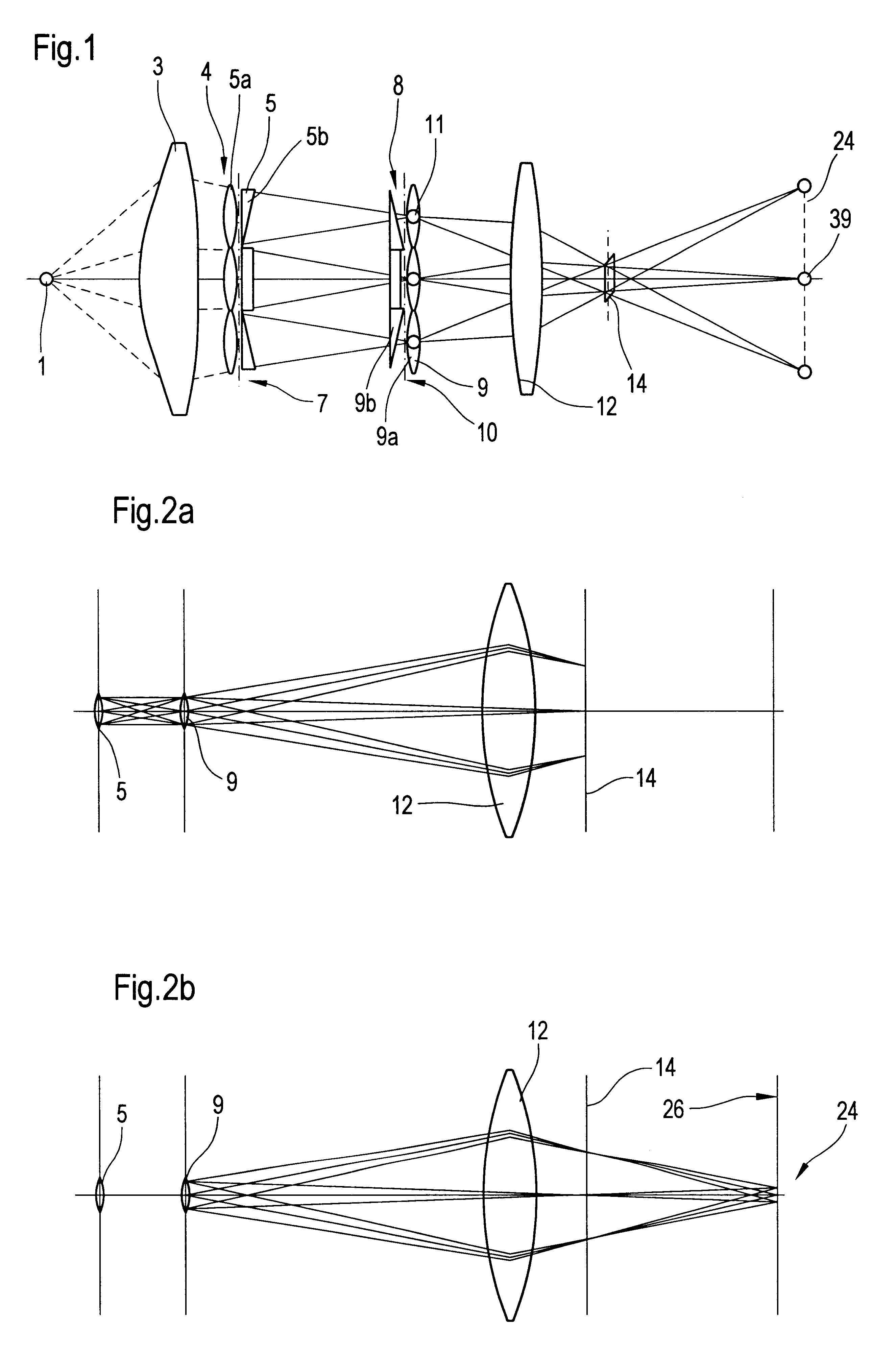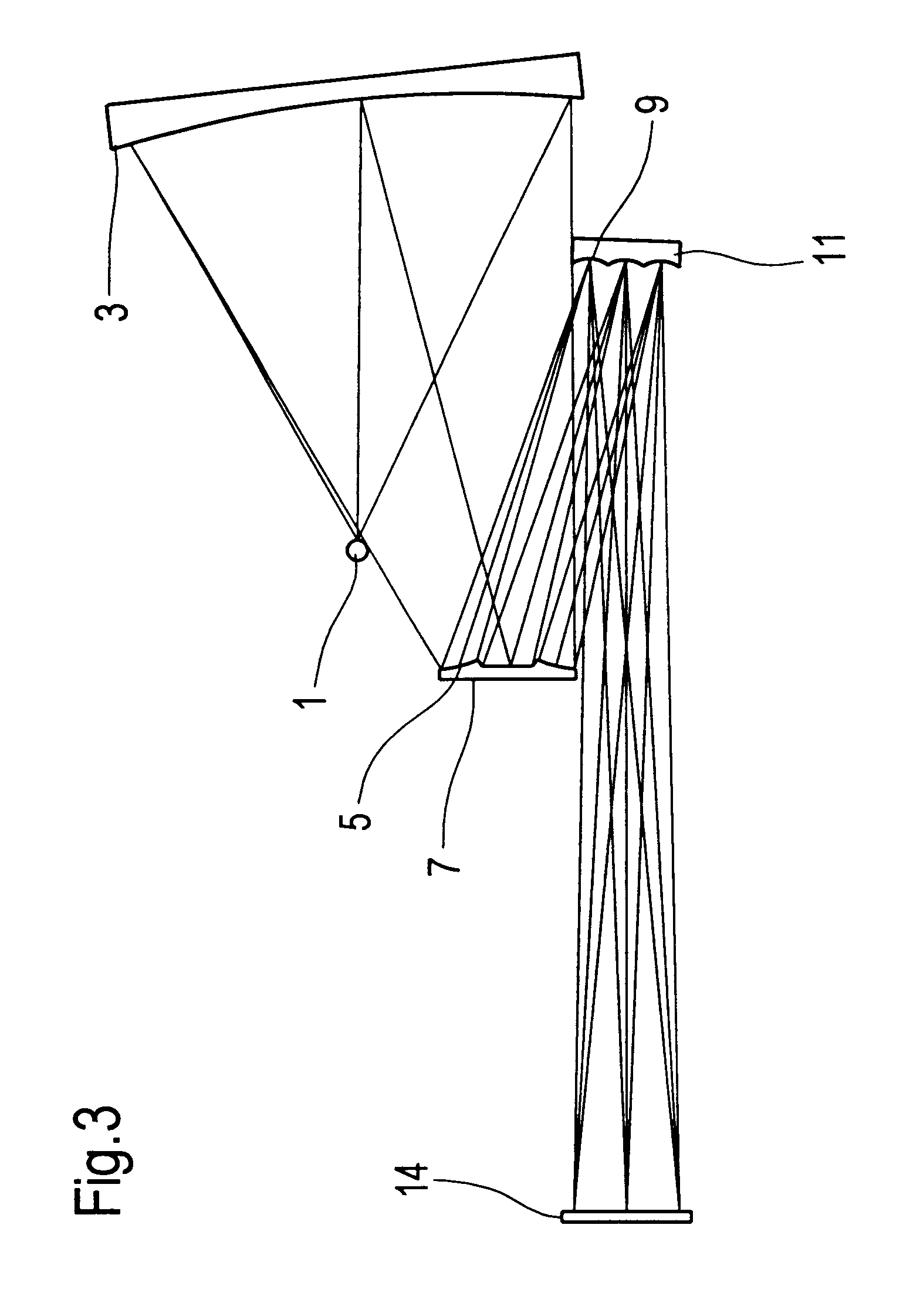Illumination system with variable adjustment of the illumination
a technology of illumination and adjustment, applied in the field of illumination systems, can solve the problems of affecting the illumination effect, and affecting the illumination effect, and limiting the illumination effect to certain types of illumination settings, namely, annular and quadrupolar illumination
- Summary
- Abstract
- Description
- Claims
- Application Information
AI Technical Summary
Benefits of technology
Problems solved by technology
Method used
Image
Examples
Embodiment Construction
FIG. 1 shows a schematic diagram of the beam path of a system with two faceted optical elements in refractive representation. The light of a light source 1 is collected by means of a collector lens 3 and converted into a parallel or convergent light bundle. A first optical element 4 includes field raster elements 5 that are arranged on a first raster element plate 7. The field raster elements 5 divide the light bundle impinging on the first optical element 4 into a plurality of light bundles and create secondary light sources 11 in a plane, where pupil raster elements 9 of a second optical element 8 are arranged. The pupil raster elements 9 are arranged on a pupil raster element plate 10. A field lens 12 images the secondary light sources 11 in an exit pupil 24 of the illumination system or an entrance pupil of a following objective (not shown). The entrance pupil of the objective coincides with the exit pupil 24 of the illumination system. The term "Kohler illumination" is also fre...
PUM
| Property | Measurement | Unit |
|---|---|---|
| wavelengths | aaaaa | aaaaa |
| wavelengths | aaaaa | aaaaa |
| wavelengths | aaaaa | aaaaa |
Abstract
Description
Claims
Application Information
 Login to View More
Login to View More - R&D
- Intellectual Property
- Life Sciences
- Materials
- Tech Scout
- Unparalleled Data Quality
- Higher Quality Content
- 60% Fewer Hallucinations
Browse by: Latest US Patents, China's latest patents, Technical Efficacy Thesaurus, Application Domain, Technology Topic, Popular Technical Reports.
© 2025 PatSnap. All rights reserved.Legal|Privacy policy|Modern Slavery Act Transparency Statement|Sitemap|About US| Contact US: help@patsnap.com



